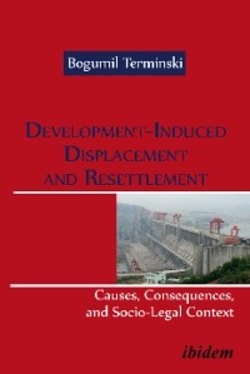Читать книгу Development-Induced Displacement and Resettlement: Causes, Consequences, and Socio-Legal Context - Bogumil Terminski - Страница 5
Foreword
ОглавлениеBogumil Terminski has put together a valuable documentation on development-induced displacement that is demanding attention today as a human rights issue. Land is a non-expandable resource but much of it being alienated from people whose sustain themselves on it, to the corporate sector to whom it is only a source of profit. Such activities change the very concept of land. From people's livelihood to which is linked their economy, culture, social systems and very identity it becomes a commodity of the corporate sector that treats it only as a source of profit. More land is being taken over in recent decades than in the past. According to unofficial sources, around 40 million hectares have been transferred from individual owners and communities to commercial companies in Sub-Saharan Africa alone. In India the estimate for 1947 (year of independence) to 2000 is around 25 million hectares, much of community owned. Under the principle of the State's eminent domain that is the basis of most land laws, such land without individual titles is State property. The law thus turns these communities into encroachers on land that they have inhabited for a thousand years or more before the individual-based laws were enacted.
Involuntary displacement is a consequence of this legal system and of the view of land as only a commodity. People are displaced or deprived of their sustenance in the name of development. Most of those who pay this price are from the subaltern communities but by and large the benefits reach the already well off classes. Those who pay the price are further impoverished and marginalised because loss of land is not merely an economic change but also deprivation of their culture and identity. The social systems that sustained their communities are linked to their land, so are their cultural, spiritual and political systems that ensured equitable distribution of resources. Weakening of these systems renders them economically powerless and deprives them of the social systems that maintained them. They lose hope in their future too. That is marginalisation.
Studies show that even in subaltern communities women pay a higher price than men do. Studies among the tribal communities in India show that tribal women had a higher social status than their dominant class counterparts had. As long as the resource was community owned, they had some decision-making power but no tribe treated them as equal to men. Also most papers presented at the 2007 Commonwealth Conference of Indigenous Women in the Commonwealth showed that women enjoyed a relatively high status as long as they live on community controlled resources, without however being equal to men. That role was linked to their land and forests and is weakened and even disappears with its alienation. All the studies on displacement in India show that tribal women's status deteriorates when the land and forests that were the source of their status are alienated from their communities.
However, the economic and political decision-makers view land acquisition only as an economic activity and ignore its cultural, psychological social and other consequences. A sign of it is the extent of displacement and the absence of an official database on its nature and extent. Studies in India, for example, point to around 60 million persons displaced or otherwise deprived of their sustenance through land acquisition for development. In Mainland China their number is put at around 70 millions. Most of this information has been got through studies done by researchers in institutions outside the official circuit. The absence of an official database is a sign that the economic and political decision-makers are concerned more with corporate profit than with people's impoverishment and marginalisation.
Children are affected in various ways. For example, 49 percent of the displaced families in the State of West Bengal in India and 56 percent in Assam have been forced to keep their children away from school and turn them into child labourers because loss of land deprives adults of access to work. So the family has to survive on the income that children bring to the household as full time labourers. That also symbolises a change in the culture of the community. Children are treated no more as a resource for the future but as a source of income for the present. Girl children are 60 percent of the children who are thus forced to become child labourers. This attitude extends also to the natural resources. Faced with shortages, communities that had traditionally treated land, forests and other resources as sustenance to be used according to present needs and preserved for future generations, begin to destroy them for sheer survival for present income. Deprived of all other income, women begin to view their body as another source of present income. As a result prostitution grows.
One can mention malnutrition and poor health care, of girls and women in particular, as other consequences of forced displacement in the name of development. These and other consequences that have been seen in studies in India and in other South Asian and East African countries turn development-induced displacement into a human rights issue. Every human being has a right to a life with dignity. However, in the name of the State's eminent domain some communities are deprived of this right for the development of another class. Bogumil Terminski brings together documentation on this issue from different parts of the world. That helps human rights activists to understand the problems faced by displaced persons all over the world and take common steps together to change policies that impoverish many for the comforts of a few. I congratulate him on this endeavour and wish him success.
Dr Walter Fernandes,
North Eastern Social Research Centre
